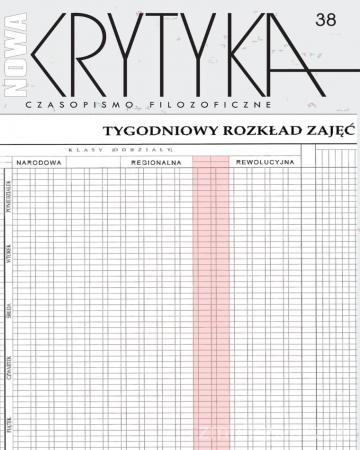




| Authors: |
Bartosz
Mika
Uniwersytet Gdański |
| Keywords: | social class workers Gdansks Shipyard Weber Marx |
| Data publikacji całości: | 2015 |
| Page range: | 19 (131-149) |
| 1. | Dunn E. 2007. Prywatyzując Polskę. Tłum. Przemysław Sadura. Warszawa: Wydawnictwo Krytyki Politycznej |
| 2. | Hardy J. 2010. Nowy polski kapitalizm. Tłum. Agata Czarnacka. Warszawa: Książka i Prasa |
| 3. | Kozyr-Kowalski S. 2004. Socjologia, społeczeństwo obywatelskie i państwo. Poznań: Wydawnictwo UAM |
| 4. | Kozyr-Kowalski S. 1967. Max Weber a Karol Marks. Socjologia Maxa Webera jako „pozytywna krytyka materializmu historycznego”. Warszawa: Książka i Wiedza |
| 5. | Ost D. 2007. Klęska solidarności, Warszawa: Wydawnictwo Muza |
| 6. | Tittenbrun J. 1992. Upadek socjalizmu realnego w Polsce, Poznań: Rebis |
| 7. | Tittenbrun J. 2007. Z deszczu pod rynnę. Meandry polskiej prywatyzacji t. 1–4. Poznań: Wydawnictwo Znak |
| 8. | Tittenbrun J. 2009. Małe jest piękne? Stosunki własności siły roboczej w sektorze MSP. Szczecin: MyBook |
| 9. | Tittenbrun J. 2010. Struktura klasowo-stanowa społeczności Poznania, Poznań: Nakom |
| 10. | Tittenbrun J. 2012. Gospodarka w społeczeństwie. Zarys socjologii gospodarki i socjologii ekonomicznej w ujęciu strukturalizmu socjo-ekonomicznego, Poznań: Wydawnictwo Znak |
| 11. | Weber M. 2002. Gospodarka i społeczeństwo. Zarys socjologii rozumiejącej. Tłum. D. Lachowska. Warszawa: PWN |